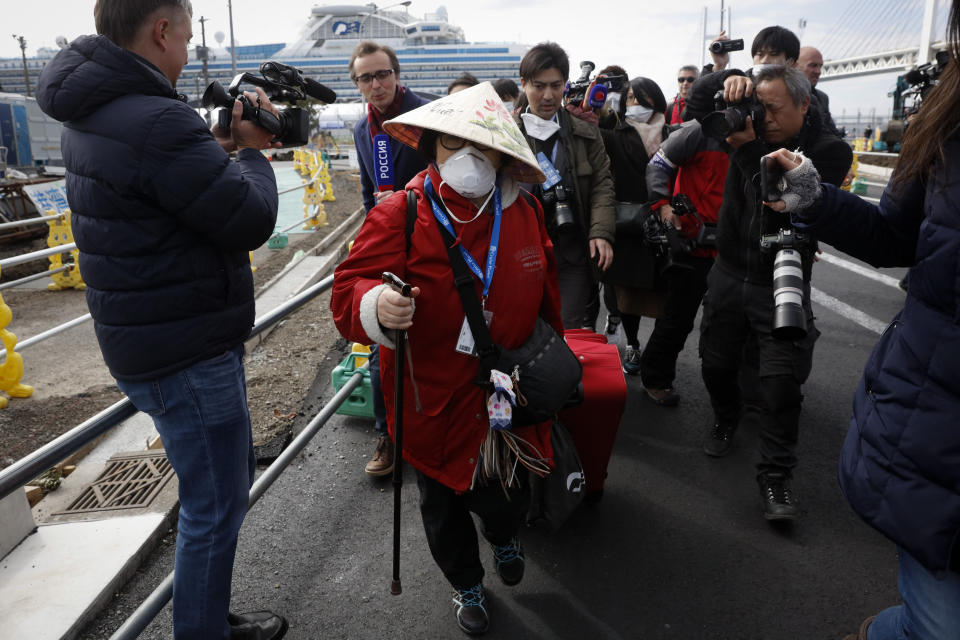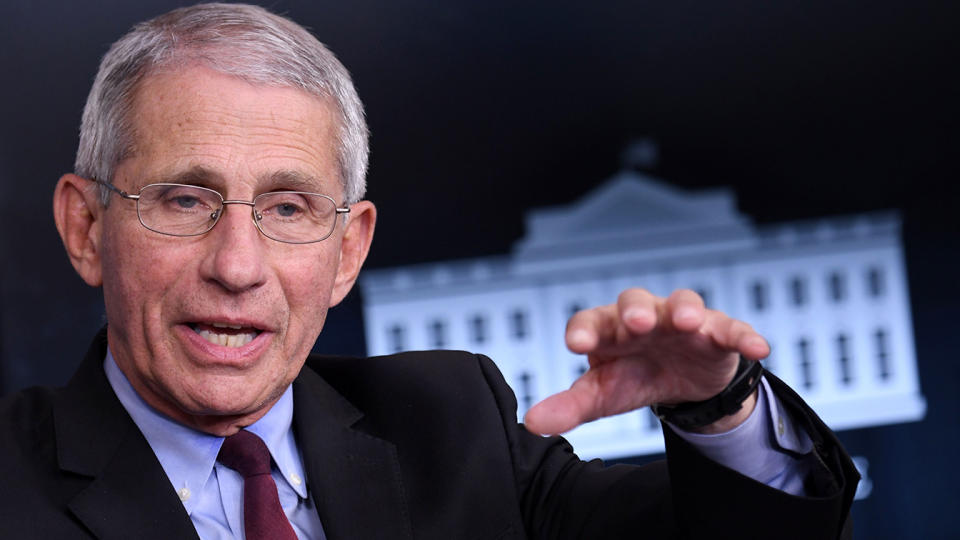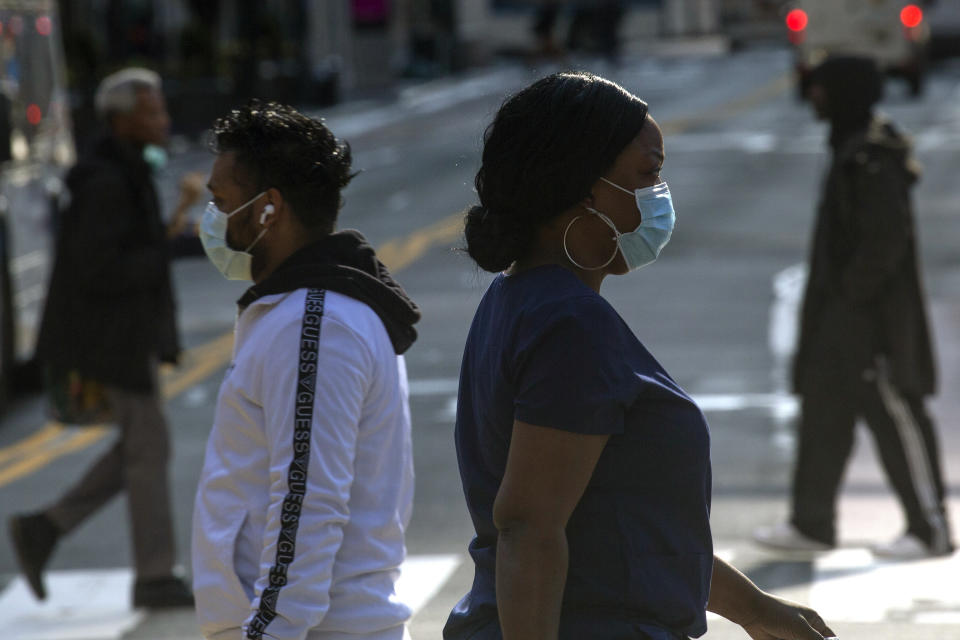Fauci once dismissed concerns about 'silent carriers' of coronavirus. Not anymore.
At Sunday’s White House briefing, Dr. Anthony Fauci, the longtime director of the National Institute of Allergy and Infectious Diseases, suggested that hundreds of thousands — or even millions — of “silent carriers” may be unwittingly spreading the coronavirus across the United States because they don’t realize they’re infected.
The idea that at least some coronavirus carriers don’t feel sick isn’t new. But the scale of Fauci’s estimate was.
“It’s somewhere between 25 and 50 percent” of the total, Fauci said. But “right now,” he went on, “we’re just guessing.”
Fifty percent is a staggering — and scary — number. To put it in perspective, an asymptomatic rate that high would theoretically double the confirmed U.S. case count to more than 700,000 infections (even though the actual number of infections is likely much larger, given all the issues with testing).
But is Fauci’s new estimate supported by science? And if so, what does it mean for the United States’ efforts to mitigate the spread of the virus and ultimately bring it under control?
The news might not be as bad as it looks.

The first thing to note is that Fauci himself expressed a high degree of uncertainty about his own numbers. “I don’t have any scientific data to say that,” he admitted Sunday. “You know when we’ll get the scientific data? When we get those antibody tests out there and we really know what the penetrance is. Then we can answer the questions in a scientifically sound way.”
Fauci was right to be cautious. As he noted, it’s impossible to say how many carriers never showed symptoms until you’ve tested a bunch of people who never showed symptoms — something that will only happen after the worst of the pandemic is over and scientists start trying to determine, en masse, who does and doesn’t have immunity. (More on that later.)
But Fauci has reason to suspect the asymptomatic rate could be as high as 50 percent. Researchers initially assumed the coronavirus would spread much like its notorious sibling, the virus that caused SARS — that is, only from people who were clearly sick with fever and cough. “Even if there’s a rare asymptomatic person that might transmit, an epidemic is not driven by asymptomatic carriers,” Fauci himself said on Jan. 28.
Yet as the deadly pathogen shut down one country after another, evidence began to surface that sick people weren’t the only ones spreading it. Some of the new data came from Wuhan, China, where the pandemic originated. Some of it came from the Diamond Princess cruise ship, where more than 700 captive passengers and crew members tested positive. Some of it came from Iceland, where nearly 5 percent of the total population — sick or not — has been screened for the virus.
All of it pointed to the same conclusion: Silent carriers are real, and they are most likely infecting others.
Estimates of the asymptomatic rate have been ticking upward for months. That’s one reason why U.S. authorities recently reversed their earlier guidance and started advising all Americans to wear masks in public.

For instance, the Chinese Center for Disease Control and Prevention claimed in early February that only about 1.2 percent of the reported cases in mainland China were asymptomatic — “relatively rare,” as a WHO-China joint report put it, and not “a major driver of transmission.”
Yet in late March, the South China Morning Post reported that more than 43,000 people in China “with no immediate symptoms,” or about a third of the country’s total case count, had tested positive for the virus by the end of February. They had not been included in the government’s official tally.
“Immediate symptoms” is an important distinction. There is a difference between being asymptomatic (meaning you never get sick) and presymptomatic (meaning you haven’t gotten sick yet). The latter looks like the former, until it doesn’t.
Yet it’s possible to tell them apart. Once the Diamond Princess docked in Japan on Feb. 3, researchers tested all of the passengers and reviewed those who tested positive for the virus on multiple occasions over a two-week period. They found that 18 percent of the infected passengers remained symptom-free throughout. Researchers then estimated that within the general population — which is younger and healthier overall than the Diamond Princess passengers, and therefore less likely to develop symptoms — that might translate to a 40-percent asymptomatic rate.
“The substantial asymptomatic proportion for COVID-19 is quite alarming,” one of those epidemiologists, Dr. Gerardo Chowell of Georgia State University, told the New York Times.

Most recent estimates have been in this range. A report based on a group of two dozen people in China said 29 percent; another based on screenings of 565 Japanese citizens evacuated from Wuhan said 30 percent. Last week Centers for Disease Control and Prevention Director Robert Redfield told NPR that “one of the [pieces of] information that we have pretty much confirmed now is that a significant number of individuals that are infected actually remain asymptomatic. That may be as many as 25 percent.” New CDC data shows that among confirmed cases, the percentage of children who show symptoms is 20 points lower than the percentage of adults who show symptoms — suggesting that minors could be a major source of covert spread.
The highest rate so far came from a biopharma company called deCODE, which has tested 9,000 nonsymptomatic, nonquarantined residents of Iceland on behalf of the country’s chief epidemiologist. Although fewer than 1 percent of the tests came back positive, the company’s founder told CNN that around 50 percent of those who tested positive said they didn’t feel sick.
That may be the source of Fauci’s high-end estimate; on Sunday, he didn’t cite any particular studies, and gesturing to the other experts onstage, he noted that “even among us, good friends that we are, we differ.”
Either way, asymptomatic transmission presents a significant near-term challenge. Several studies have also shown that people infected with the coronavirus are most contagious one to three days before they begin to show symptoms, and researchers in China recently discovered that one asymptomatic carrier had just as much virus in his system as his symptomatic peers — meaning that he was probably just as contagious.

The result is that Americans who feel perfectly fine must now choose to believe they’re protecting others by wearing masks in public, and authorities in areas where almost no one has tested positive must now decide to get ahead of the curve by issuing shelter-in-place orders that may look at first like overkill. According to the New York Times, a new study by disease modelers at the University of Texas at Austin suggests that “even counties with just a single reported case have more than 50 percent likelihood that a sustained, undetected outbreak — an epidemic — is already taking place.” Once there are five cases in a county, that probability rises to 85 percent.
In the long term, however, a huge, hidden population of asymptomatic cases may actually prove to be helpful. For one thing, it would mean that the coronavirus isn’t as deadly as initially feared, which could ease anxieties and inform public-health approaches going forward. It would also mean societies and economies could return to normal sooner than anticipated — assuming that universal antibody tests show that hundreds of thousands (or even millions) of people who never felt sick are now immune. The first such U.S. test was approved by the Food and Drug Administration on April 2.
“Making sure we are testing asymptomatic individuals to understand more about this virus is critical,” California Gov. Gavin Newsom said Monday. “It’s all part of figuring out whether people have immunity … in order to get [them] back into the workforce, or at least back in society.”
So as frightening as Fauci’s 50-percent estimate sounds today, Americans may ultimately be grateful if his “guess” turns out to be correct.

_____
Click here for the latest coronavirus news and updates. According to experts, people over 60 and those who are immunocompromised continue to be the most at risk. If you have questions, please refer to the CDC’s and WHO’s resource guides.
Read more:




